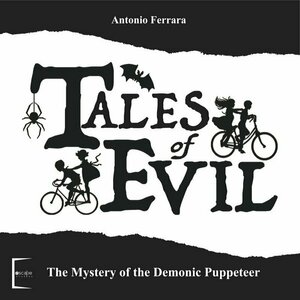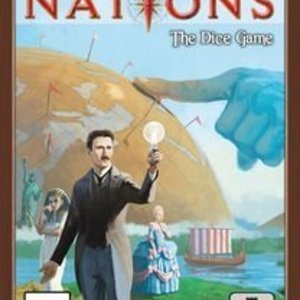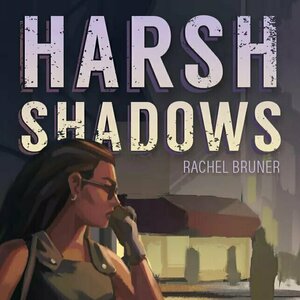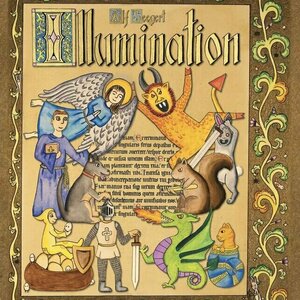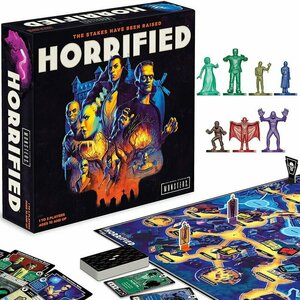Purple Phoenix Games (2266 KP) rated Tales of Evil in Tabletop Games
Oct 1, 2020
Tales of Evil is a cooperative, horror, storytelling, adventure game that uses a unique new “Fusion System” throughout the game. Players will be taking on personas of kids from the 1980s who belong to a club named “Pizza & Investigation.” I do not wish to reveal too much in this review, so I will be covering this as a Solo Chronicles using one character going through the introductory tutorial mission.
DISCLAIMER: We are using the Kickstarter Deluxe version of the game. We do have the expansions from the KS campaign, but will not be using those for this review. Also, we do not intend to cover every single rule included in the rule book, but will describe the overall game flow and major rule set so that our readers may get a sense of how the game plays. For more in depth rules, you may purchase a copy from the publisher directly or from your FLGS. -T
To setup, well, just follow the setup instructions in the rulebook. There’s too much for me to explain here. For one character playing the tutorial scenario, the game setup should look similar to what is pictured below. Maybe. The rulebook does not specifically state WHERE each item should be placed, so players will have ultimate freedom to setup items where they see fit to be most efficient for themselves.
Players in Tales of Evil will have no real “turn structure” as most games do, because all players will be adventuring together as a group. So characters will be moving as a group and never splitting the party (RPGers breathe a sigh of relief… maybe). However, as with many adventure games of this style, once players explore into new areas certain markers will placed on the board (Clue, Darkness, Mystery, Search, etc). These markers signify different actions that can be taken, or entrances to areas that are blocked or found, or something that could be traced from one area to another. The leader of the group for the time being is in possession of the Walkie-Talkie and will make all final decisions for the group after any discussion (for solo players, it is just a nice prop). Usually searching for items will result in a card draw and upon the card will be a test to pass using the stats on the player character mat to roll dice for successes. Of course, the other side of that are horrible losses as well.
Players will be traipsing through the area and reading passages from two actual books: the Story Book and the Event Book. Most of the action happens in the Story Book and it will guide players through the story and once choices are made or tests succeeded/failed, the book will instruct players what to do next and to which section to turn to further the story (a la Tales of the Arabian Nights). The game continues in this fashion until the story ends with victory or defeat.
Components. Why yes, that is a real spoon in the photo above. No, it does not come with the game. I will explain in a bit. The components in this game are great. Each character has their own mat for organization, action cards, equipment cards, and status cards that dictate the difficulty of the game and how the character degrades over time in the horror-filled mission. Some components are even glow-in-the-dark! A nice touch, but certainly unnecessary. I find everything to be wonderful quality, even the cards that are kind of polarizing on the KS comments are nice (people are complaining that they are not linen-finished, but I believe the publisher made the right call to make them matte finished if the linen obscured the look and art on them). Thumbs up for components from me.
I wanted to wait until my final thoughts to explain the whole “Fusion System” that is in play here. Tales of Evil uses the catchphrase, “You will get into the game and the game will get into you!” Now, I’m not sure exactly how this game is getting into me, but I’m certainly digging the game and this Fusion System. You see, some cards (in the tutorial, remember, so I’m not really giving much away here) will give players 60 seconds to grab a kitchen spoon for some benefit and a debilitation if they are unable to find one – hence the spoon in my photos. Another card relies on the character (and also then the player) removing their shoes. Still yet another deals with fire or people smoking in the vicinity. If there is fire nearby in real life, it affects the effects of the card drawn. It’s ingenious and I love every little bit of it! I can’t wait to see how the Fusion System will work in this game more and how it can be applied to other games in the future.
All in all I love everything about Tales of Evil. The setting is great, the Pizza & Investigation kids are awesome, and the game itself is incredibly engaging and makes you really think about the choices you make within. Perhaps the haunting feeling of doubting some choices is how the game gets into you, because I did find myself wondering what would have happened had I chosen a different course for some instances. I am very drawn to this game and I want to tackle all of the scenarios. Even solo! And another great thing about Tales of Evil is the fact that a player (or players) can join a game already in progress! So if I am exploring solo and my wife decides she wants to hop in, she just grabs a character mat, sets up the character, and dives right in with me. I LOVE games like that. So versatile.
While I should probably stop gushing at this point I just can’t. This game is so much fun and worth every penny spent on it. I implore you, if you are a fan of exploration adventure games in this vein you definitely need to snatch up a copy whenever you see one. And if you love it as much as I do let me know. We can swap adventure stories.
Oh did I mention the designer is even created a way for us normies to create our own scenarios and upload them to other Tales of Evil players? Yeah, I’m fascinated by that as well…

Planoly: Planner for Instagram
Photo & Video and Productivity
App
Planoly is the first visual planner and scheduler for Instagram. We're the end to end visual...

Sunrizer synth
Music and Entertainment
App
"This really is the synth that keeps on giving! Inspiration and intuition truly blend together in...
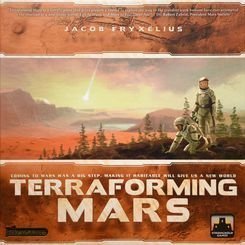
Terraforming Mars
Tabletop Game
In the 2400s, mankind begins to terraform the planet Mars. Giant corporations, sponsored by the...
Boardgame TerraformThis MeeplesChoice
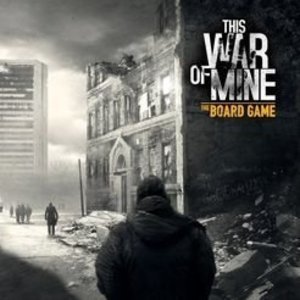
This War of Mine: The Board Game
Tabletop Game
This War Of Mine: The Board Game is the tabletop adaptation of the award-winning video game that...
Purple Phoenix Games (2266 KP) rated Nations: The Dice Game in Tabletop Games
Aug 16, 2019 (Updated Jul 17, 2021)
Nations: The Dice Game (can I please just call it Nations for this review as we know I am not talking about the original? Thanks.) is a civilization building, upgrade tile drafting, dice game for one to four players. Players will be upgrading their civilizations over four game rounds to compete for Books and VPs. The player with the most VP at the end of the game is the winner.
Disclaimer: The photos shown here is for a solo game, as I took them during my learning game using the solo rules. Normally the purple d4 is not used in multiplayer games. -T
To setup, each player will choose a starter civilization mat, receive five white dice, a gold chit, and a re-roll chit. Player order will be determined by cards and each player will receive their player order card which doubles as a reference card (great idea). The Progress Board will be set on the table and populated with randomized Age I Progress tiles according to the rule book. The Score Board will also be placed on the table to track Books, Events, and final VPs. The game begins with each player rolling their five dice.
Nations (TDG) is played over four ages with multiple rounds per age. At the beginning of each age old tiles will be removed from the Progress Board and new ones for the current age added. Also an Event tile will be drawn and placed on the Score Board to signify goals for Famine and War at the end of the age. On a player’s turn they will take one action from the following: Re-Roll (any or all unused dice by spending a re-roll chit), Buy tile (from the Progress Board to upgrade player mat spaces and dice), or Build Wonder (tile using Stone dice or chits for VP). When a player has taken as many turns/actions they wish for the age, they turn their player order card to the side to indicate they have passed for the remainder of the age.
Once all players have passed, they will tally their unused dice and any chits showing Books to be recorded on the Book track. Players will score points for Books based on how many opponents they have outscored for Books. Then players will consult the face-up Event tile that was revealed at the beginning of the round. The top portion displays VP earned when players discard unused dice and chits showing Famine leaf icons matching or exceeding what is on the Event tile. Similarly, for War players will consult the Event tile and use the sword icons on unused dice and chits to score any VPs for War. Play continues in this way across all four ages and once the fourth age has been scored the game ends and winner named victorious!
Components. I have mostly good news here. The dice in this dice game are wonderful. They are all easy to read and understand, and feel great when rolling nine or ten of them at once. The chits are fine, the Progress and Event tiles are nice and thick. The player mats, Score Board, and Progress Board are very thin though. I was going to give that a negative remark, but you know, players don’t really handle them during the game so there is no real need for them to be any thicker. The art is similar as in Nations, and while it does not resonate with me, it is fine. I won’t be playing Nations for the art.
All in all the game is fine. It didn’t blow me away or completely replace Nations (the big game) for me. It IS a pretty quick game to play, so there is one definite improvement over the big brother game; 10-15 minutes per player is pretty spot on. I usually do not prefer dice games to the originals (BANG! The Dice Game being the obvious improvement), and this one is really just on par with the big game. While it takes up less space on the shelf, I wouldn’t necessarily recommend it over its sibling. I feel the same way about each game, so my recommendation is get the version you feel would be played more often. Purple Phoenix Games gives Nations: The Dice Game a Montezuma-should-be-in-Age-IV 6 / 12. Give it a shot if you are into dice games, but grab the original if you want something meatier.
Purple Phoenix Games (2266 KP) rated Harsh Shadows in Tabletop Games
Apr 20, 2021
Disclaimer: We were provided a copy of this game for the purposes of this preview. The pictured components might not be finalized, and could differ after a successful Kickstarter campaign. -L
Harsh Shadows is a solo card game of hand management, grid movement, and deduction where you are an agent working to collect evidence necessary to apprehend an enemy spy. To setup for a game, randomly place the 9 Location cards in a 3×3 grid. Prepare the Discovery deck as described in the rules, place 1 face-down Discovery card to the right of each Location, and place the rest of the deck off to the side of the grid. Shuffle the Confiscated Item cards and deal the appropriate number to each of the Case File cards – 3 to Evidence, 1 to Red Herring, and 4 to False Leads. The Spy card is placed on the upper-left-most Location, and your Agent card on the lower-right-most Location. Shuffle the Spy Movement cards, and the game is ready to begin! It should look similar to the picture below.
The game is played over a series of rounds in which you will be moving your Agent, performing additional actions, and then moving the Spy. The goal is to track down the Spy, with the correct evidence in hand, before the Spy is able to flee the scene. The first thing that you will do each round is to move your Agent. You may only move to a Location that is adjacent or diagonal to your current Location. Once you move to a new Location, you will draw the top Discovery card from that Location. Discovery cards will either be Items, Clues, or Bombs. Items are collected as potential Evidence, Clues are used to reveal Confiscated Items from Case Files, and Bombs force you to discard a card from your tableau. After you have moved and collected a new Discovery card, you may perform any/all of these additional actions: Use Clue Cards, Place the Tracking Bug, Track the Spy, or Use your current Location’s ability. To Use Clue cards, you will discard a number of clues in order to reveal a Confiscated Item card from a Case File. The Confiscated Items under the Evidence Case File show the 3 items you are required to have in hand to apprehend the Spy by the end of the game. The item under the Red Herring, if you have it in hand at game’s end, will cause you to automatically lose. The 4 items under the False Leads will neither help you win, nor cause you to lose – they simply offer fodder for you to discard when necessary.
Another element required to win the game is to place the Tracking Bug on the Spy. On your turn, you may place the Tracking Bug at your current Location card – if the Spy moves to the Location on a future turn, they are considered to be ‘bugged’ and the Tracking Bug is live! Twice per game, you are allowed to Track the Spy. To do so, you will look at the top card of the Spy Movement deck, and return it to the top. This just lets you see to which Location the Spy is about to move. And finally, you can use your Location’s ability. Once you have taken as many of the additional actions as you want, it is time to move the Spy. Reveal the top card of the Spy Movement deck, and move the Spy in the appropriate direction to a new Location. At the Spy’s new Location, add a Discovery card to its pile. Play continues in this manner until either you make an accusation, or the Spy escapes. In order to make an accusation, you must have Evidence cards in hand, the Spy must be bugged, and you must be at the same Location as the Spy. When you make an accusation, you will reveal any remaining cards under the Evidence and Red Herring Case Files. If you have the 3 matching Evidence cards, you win and apprehend the Spy! BUT if you have the Red Herring card, or you are missing any of the required Evidence cards, you lose. If you haven’t made an accusation in time, the Spy could escape, causing you to lose the game as well – I’ll leave those details for you to discover on your own!
In theory, Harsh Shadows seems like a neat and strategic card game, but how does it hold up in reality? Pretty well, actually! The first thing I want to talk about is how strategic it is, even with its elements of deduction. You need to collect Evidence fast in order to catch the Spy, so what’s the best plan of movement? Also, each Location has a special ability, so is there an ability you need to use now or do you want to wait a bit longer? After using a Location’s ability, it is no longer available for the rest of the game, so you have to time those uses carefully. Along those lines comes the deduction. Sure, you can try to reveal all the Confiscated Items so that you’re 100% sure that you’ve got the right Evidence. But if you don’t work fast enough, the Spy could escape. Are you willing to risk only knowing for sure what 1 piece of Evidence in order to confront the Spy before it’s too late? Or do you want to save up Clues to purchase that coveted Red Herring, to know for sure what not to keep in order to win. There’s a balance of risk with deduction, as well as a real-time element in the sense that the game has a finite amount of rounds. You’re not racing a physical clock, but once the Discovery deck runs out, the Spy is considered to be on the run, on the verge of escaping. Overall, this is a casual card game, but it has a decent amount of strategy to keep you engaged and entertained.
Let’s touch on components for a second. Obviously, this is just a card game, and this is a preview copy. As I said earlier, the final production could differ from this version, but I have to say that this preview copy is good quality. The cards are nice and thick, the artwork thematic and clean. I imagine the rules would get some final edits for slight clarifications, but for the most part the production quality is already pretty decent.
I have to say that Harsh Shadows surprised me. I’d never played a solo game with deduction elements, and it was actually quite exciting. Usually the deduction games I’ve played are based around sussing out a traitor amongst a group of people, so there is that human interaction element that can really help guide your thoughts and decisions. In Harsh Shadows, there’s nobody but yourself – you can’t look for tells in other players because the cards won’t speak to you. It feels riskier in this way because it’s more a game of odds then, instead of your ability to pick out social cues. Other people may feel differently, but I thought this was a neat twist on the deduction mechanic. If you’re looking for a strategic solo game, that plays relatively quickly and casually, I would definitely recommend checking out Harsh Shadows. It goes live on Kickstarter here in April, and I look forward to following its progress!
Purple Phoenix Games (2266 KP) rated Illumination in Tabletop Games
Oct 5, 2021
Illumination is a game about two monks who are tasked with illuminating the pages of manuscripts with drawings in the hopes of becoming the next head of the Scriptorium: The Scriptmaster, one might say. However, one of the monks gets a little itch and begins to draw irreverent subjects, like demons, dragons, and such. Which monk will earn the made-up-by-me title of Scriptmaster? Guess you will have to play to find out.
DISCLAIMER: We were provided a copy of this game for the purposes of this review. This is a retail copy of the game, so what you see in these photos is exactly what would be received in your box. I do not intend to cover every single rule included in the rulebook, but will describe the overall game flow and major rule set so that our readers may get a sense of how the game plays. For more in depth rules, you may purchase a copy online or from your FLGS. -T
As with many games that are well endowed with components, setup can be a bit of a task. The game will be focused around a few main areas. First, the three manuscript pages are placed on the table in any orientation, with the purple wild Drollery tiles placed on one text box on each page. The Monastery mat is placed nearby as well, with the Abbot pawn randomly placed on a blank station. This pawn will be moved around the map during play to determine which rituals may be performed at any one time. Each player will have their own player mat, upon which will be placed their starting gold (1 for the Reverent player and 5 for the Irreverent player), as well as their starting nine Illumination tiles. The rules mention separating all the Illumination tiles into stacks of three, choosing three of these stacks to flip over and place on the play mat without altering the order. This is very important to keep the tiles in their randomized order. The remainder of the tiles are to be placed nearby in stacks of three. Each player is dealt one starting Scriptorium card and a random Crusade card that will offer bonuses at the end of the game. Once all setup, the game may begin with the Reverent player’s turn.
On a turn, the active player will choose from their mat one row or column of three tiles to be played. They take the three tiles and place them upon one of the three book pages on the table, in the margins. From there the player can choose any tile from the margin to place onto the page in any order they wish, upon any quill icon they choose (except for coin tiles – those simply grant two coins immediately). If the tile is placed on a quill of a matching color to that of the tile, the player will immediately collect one coin and place it on the player mat. If the tile is placed on a quill and orthogonally touches a tile of the matching color, the player then collects a Ritual token of the same color. These Ritual tokens are used in sets of three, four, or five in order to earn VP for end of game scoring. Each purple Drollery tile is wild for the purpose of placement and Ritual token collection. Each tile placed will collect its earnings immediately, and any coins earned may be spent immediately as well.
A player may use coins for several purposes throughout the game: move a tile from the margin of one book to the margin of a different book, move the Abbot one space along the track for Ritual purposes, or to draw a Scriptorium card. The other resources are Ritual tokens, and may be spent during the turn as well. In order to spend these, the Abbot must be on the matching location on the Monastery board, and the player may spend three, four, or five matching tokens to perform the Ritual. They discard the tokens, place one of their cubes upon the appropriate icon on the Monastery mat for VP at game end.
At any time during the turn Scriptorium cards may be played. These are very special cards that allow the player to complete certain actions that break the normal rules. This could be a free movement of the Abbot, or switching places of two tiles on the player mat, or even banishing one of the opponent’s tiles to another book entirely.
Why mention the battles in the intro if they are not part of the game? They are. Once opposing foes are placed orthogonally from each other, and all involved tiles are completely enclosed by other tiles or board obstacles, a Bounded Battle will begin. Battles are simple to resolve as it requires players to count the number of combatants on both sides and whichever side has more forces wins the battle. The winner places their cube on the appropriate battle card near the Monastery mat, and the loser gains coins equal to the number of their tiles lost to battle. Tiles that are lost are simply flipped to its opposite side.
Play continues in this fashion of players choosing and placing tiles, drawing and using Scriptorium cards, performing Rituals, and resolving Bounded Battles until both players pass their turn. The game is then over and VP counted in all their places around the play area. The player with the most points becomes the next Scriptmaster Flex and is able to enhance or defile as many manuscripts as they like!
Components. This game has a lot of components, but they are mostly cardboard tiles, cardstock cards and mats, and wooden cubes. The quality is all very fine, as to be expected with Eagle-Gryphon games. The art, for me, is the biggest drawback of the game. I UNDERSTAND why it looks the way it does – in trying to stick with a Medieval manuscript theme some decision were made on the style. It just doesn’t vibe with me. I took a look at the new edition of The Road to Canterbury, by the same designer and publisher, and loved the look of it. I REALIZE that the tiles are supposed to be not only reminiscent of the art style of that time period, but also imaginations of monks and their doodles, but it’s just not for me. I do like the looks of everything else except the art on the tiles, and when that’s the majority of the components I am looking at, I sigh a little. I am absolutely no artist, and I can acknowledge that the art presented is very good and in line with the theme. Oh well.
The game play is very solid, and I do like it quite a bit. Everything makes a lot of sense as to why you are doing the actions, and the most difficult thing to comprehend the first time through is the Bounded Battles. You see, battles don’t immediately happen when you pit one foe against another. In fact, all tiles engaged need to be surrounded by other tiles or battleground obstacles before battle can begin. This allows both sides to add more tiles to help sway the balance of power, and can get a little confusing for some players. Not ME, of course, but SOME players (ok it was totally me the first time through). I am thankful that resolving the battles are pretty simple, and winning battles gives the victor a cool five points.
Other aspects I really enjoy are the Scriptorium cards and the Rituals. Again, the Scriptorium cards can be drawn for two coins during the game and can provide excellent rule-breaking choices to the players. Any time a game has cards that bend the rules, I generally am a fan. The Rituals are merely tokens that are collected and then turned in for points. This doesn’t necessarily sound that interesting until I reveal that a player board only has space for seven items: Ritual tokens AND coins included. So a player may be stacking up coins, and not have space for Ritual tokens or vice versa. Hard choices need to be made sometimes, but to help with that Ritual tokens can also be used like a coin, but not the other way around. So there is no buying Ritual tokens. Having that restriction of seven items on hand is a really nice touch, and makes each turn important.
So all in all I enjoyed my plays of Illumination. I have yet to try the solo version that is included, but I will soon. I feel that of the two Medieval series games I have played I prefer The Road to Canterbury, but I do like the different feel of Illumination. Having a solo mode is also very attractive to me because my wife and I do not always have matching schedules where we can game together. I like Illumination for the actual gameplay, but the art is a turn-off for me. Purple Phoenix Games gives this one an irreverent 4 / 6. If you are looking for something a little different that features some interesting game play, tons of choices, yet is restrictive as well, take a look at Illumination. Try not to complete too many wine and candle rituals though. Those two things don’t mix very well in my experience.
Matthew Krueger (10051 KP) rated Horrified: Universal Monsters Strategy Board Game in Tabletop Games
Jul 31, 2020 (Updated Aug 1, 2020)
The Gameplay:
Horrified is a cooperative game in which all the players win or lose together. The players win if they defeat all of the Monsters they are playing against. In order to defeat a Monster, you must first complete a task.
Each Monster's task and subsequent defeat is unique:
Creature from the Black Lagoon: Find the Creature's hidden lair, then drive the Creature away.
Dracula: Smash Dracula's four coffins, then overcome Dracula.
Frankenstein and the Bride: Teach Frankenstein and the Bride what it means to be human so they can live peacefully.
The Invisible Man: Supply evidence to the police of the Invisible Man's existence, then trap him.
The Mummy: Break the Mummy's curse, then return him to his tomb.
The Wolf Man: Discover the cure for lycanthropy, then administer it to the Wolf Man.
The players lose immediately if one of the following occurs:
Terror: Each time a Hero or Villager is defeated, the Terror Level will increase. If the Terror Level reaches its maximum, indicated by the skull, the Monsters have overrun the village and the players lose.
Out Of Time: Each turn, you will draw a card from the Monster deck. If you need to draw a Monster card but the deck is empty, you have taken too long to defeat the Monsters and the players lose.
Each turn has two phases, performed in this order:
Hero Phase: Take as many actions as indicated on your Badge. In addition, any player may play any number of Perk cards.
Monster Phase: Draw one Monster card from the top of the Monster deck and resolve all three parts of the card. After completing both phases, play proceeds clockwise, starting with the next player's Hero Phase.
Hero Phase: Actions: Take up to the number of actions indicated on your Badge. You may choose to take fewer. Actions may be taken multiple times and in any order. The possible actions are:
Move: Move your Hero along a lit path to an adjacent space. You cannot move to water spaces and can only cross the river using one of the two bridge spaces. In addition, you may take any number of Villagers in your Hero's space with you when you move.
Guide: Move one Villager from your Hero's space to an adjacent space, or move one Villager from an adjacent space to your Hero's space. Villagers also cannot move to water spaces, and Monsters do not affect their movement.
Special Action: Some Heroes have a special action, as indicated on their Badge. Just like other actions, special actions count as one of the total number of actions for your turn and can be taken multiple times.
Pick Up: Take any number of Items from your Hero's space. Keep all your Items in front of you, next to your Badge.
Share: All Heroes in the same space as your Hero may freely give or take any number of Items from each other.
Advance: At a specific location, use one of your Items to advance a Monster's task.
Defeat: In a Monster's space, use your Items to defeat that Monster.
Monster Phase:
Draw a card from the top of the Monster deck and resolve the three parts of the card, from top to bottom. After resolving the entire Monster card, put it in a discard pile face up.
1. Items: Draw the number of Items listed at the top of the card, if any, from the Item bag. Place each Item at the location indicated on the Item.
If you need to draw an Item when the Item bag is empty, place all the Items from the discard pile into the bag, mix them up, and continue drawing.
2. Event: Each Event either involves one of the Monsters or the Villagers.
The card's color, as well as the symbol above the Event's name, indicates who the Event is about. Gray cards are about the Villagers. Colored cards are about a specific Monster.
If the Event Monster is not in your game, completely ignore the Event and continue with the Monster Strike. Otherwise, read the Event out loud and do what it says.
3. Monster Strike: Certain Monsters move and attack, as indicated by the symbols at the bottom of the card. In order from left to right, move and attack with the first Monster before proceeding to the next Monster.
If an indicated Monster is not in your game, ignore that symbol. If the Frenzy symbol is shown, the Monster with the Frenzy Marker moves and attacks. This could result in the same Monster moving and attacking twice in one turn.
Move the Monster the number of spaces indicated on the card towards the closest person (Hero or Villager). As soon as the Monster is in a space with a person, they stop moving. If the Monster started in a space with a person, they don't move at all.
Attack one person in the Monster's space by rolling the number of attack dice indicated. If there are no people in the Monster's space, the Monster does not attack-do not roll dice. If there are multiple people in that space, the Monster will attack a Hero rather than a Villager.
If there are still multiple people the Monster could attack, the current player chooses one to attack before rolling.
Perk Cards: Each player starts the game with a Perk card, and more Perk cards can be earned by getting Villagers to their safe locations. Keep all your Perk cards face up in front of you. It's a good idea to discuss your Perk cards, and when to play them, with the other players.
Perks may be played on any player's turn, but only during the Hero Phase. When you play a Perk card, do what the card says, and then put it in a discard pile face up. Playing a Perk card does not take an action.
Items: Items are important for advancing tasks and defeating Monsters, as well as defending yourself from the Monsters' attacks. Each Item has a color, indicating its type, and a strength, which is the number at the top. Each Item also has a location, which indicates where the Item is placed when it is drawn from the Item bag.
Hit by a Monster:
Heroes: To ignore being hit by a Monster's attack, a Hero may discard one Item for each Hit symbol rolled. If the Hero does not have enough Items, or does not wish to discard any Items, they are defeated. One hit defeats a Hero.
When a Hero is defeated, increase the Terror Level by moving the Terror Marker one space and remove that Hero from the board.
At the start of that player's next turn, they place their Hero at the Hospital and take their turn as normal, including their full number of actions. A defeated Hero does not lose any Items or Perk cards.
Villagers: A Villager does not have any Items and is therefore defeated immediately when hit. When a Villager is defeated, increase the Terror Level by moving the Terror Marker one space and remove that Villager from the board.
End of the Game: The game can end in one of three ways:
Heroes Triumph: If you defeat all the Monsters, the game immediately ends and the players have won! You've saved the village from a horrific fate, and perhaps even the Monsters themselves.
Terror!: If the Terror Level reaches its maximum, indicated by the skull, the game immediately ends and the players have lost. Everyone, including the Heroes, are too horrified to continue. You abandon the village to the Monsters.
Out Of Time: If you need to draw a card when the Monster deck is empty, the game immediately ends and the players have lost. You've taken too long to save the village. The Villagers have fled and you aren't able to continue.
Solo Play: The Villagers are more fearful if there is only one Hero trying to save the village. Begin the game with the Terror Marker on the "3" of the Terror Level Track.
All the rules remain the same. However, do not play as the Courier-that Hero's Special Action cannot be taken in a solo game. Also the Perk cards "Special Delivery" and "Conduct An Investigation" cannot be used.
Either remove these cards before playing, or when drawn, immediately discard and draw a new Perk card to replace it.
Its a fantasic excellent strategy game based around the universal monsters. I love it so much its such a fun game. If you want to learn more go to BoardGameGeek, Dice Tower Review or One Stop Co-Op Shop.
